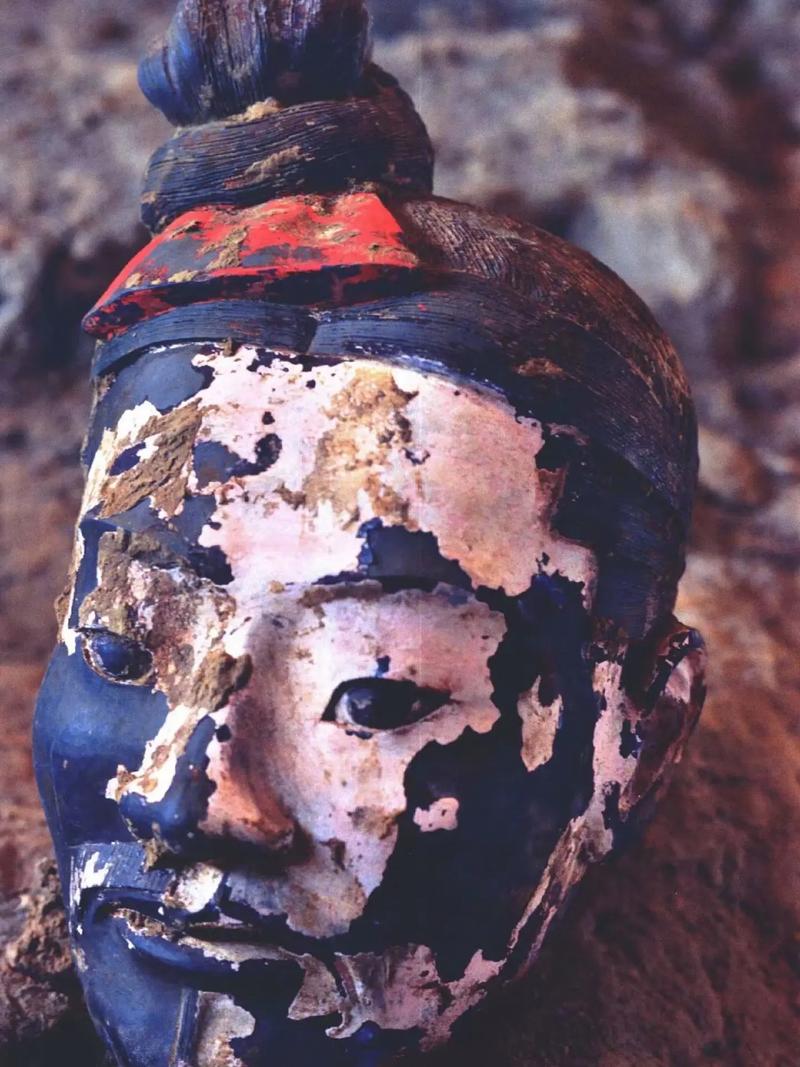
What Was Found in the Terracotta Army Pits?
The Terracotta Army is one of the most significant archaeological discoveries of the 20th century, captivating the world with its sheer scale and intricate detail. But the army of terra-cotta warriors was not buried alone. Thousands of artifacts were buried alongside the warriors, providing invaluable insights into the military might and artistry of the Qin dynasty. Let's delve into what archaeologists unearthed alongside these silent guardians.
An Army Ready for Battle
After the warriors were painstakingly painted, they were placed in military formation within three vast pits, mirroring the organizational structure of a real army. These warriors were not merely ceremonial figures. They were outfitted as if ready to march into battle.
A Formidable Arsenal
Over 40,000 bronze weapons have been discovered within the partially excavated pits, each meticulously crafted and still sharp enough to cut after 2,000 years buried underground. The variety and craftsmanship of these weapons are astonishing:
- Swords: Thousands of bronze swords, often found at the warriors' sides, speak to the Qin dynasty's advanced metallurgical skills. These swords, some measuring over three feet, feature chrome plating, a technology thought to have been developed centuries later.
- Lances and Spears: These long-reaching weapons, held by the front lines of the terracotta army, would have been formidable in battle. Their bronze heads were designed for piercing enemy lines.
- Arrows: Quivers filled with bronze arrowheads, discovered near the archer formations, illustrate the importance of ranged combat in the Qin military doctrine. These arrowheads, often found still attached to their original wooden shafts, highlight the meticulous nature of the army's preparation.
More Than Just Warriors
The pits weren't just home to soldiers. Archaeologists discovered other figures essential to the functioning of a vast army:
- Chariots: Elaborate bronze chariots, complete with horses and drivers, highlight the importance of mobility and speed on the ancient battlefield. These chariots, some featuring intricate bronze umbrellas and ornate decorations, likely belonged to high-ranking officers.
- Horses: Hundreds of terracotta horses, depicted in various poses and often adorned with harnesses, were intended to carry the warriors into battle and pull the war chariots.
- Generals and Officers: Towering above the rank-and-file soldiers, terracotta figures depicting generals and officers showcase different armor styles and weaponry, reflecting their higher status within the army.
A Glimpse into Ancient China
The discovery of the Terracotta Army and the accompanying artifacts is more than just an archaeological marvel. It is a time capsule, providing invaluable insights into:
- Military Organization: The formation of the warriors, the types of weapons, and the presence of chariots shed light on the military strategies and organization of the Qin dynasty.
- Metallurgical Skills: The craftsmanship of the bronze weapons, particularly the chrome-plated swords, demonstrates the advanced technological capabilities of the Qin artisans.
- Artistic Expression: The life-size figures, each with unique facial features and expressions, showcase the incredible artistry of the period and the Qin obsession with replicating life in the afterlife.
The Terracotta Army continues to be an active archaeological site. Each new artifact unearthed adds another piece to the puzzle, revealing more about this fascinating period of Chinese history and the legacy of the First Emperor.
Q&A
1. What makes the Terracotta Army weapons so special?
The weapons are remarkable not just for their quantity but also their quality. Made from bronze, they remain sharp and surprisingly rust-free, thanks to the unique soil conditions and the chrome plating found on some swords. This level of preservation is rare and speaks volumes about the craftsmanship of the period.
2. Were all the figures in the Terracotta Army soldiers?
No. While the vast majority were soldiers, archaeologists also found figures of generals, officers, charioteers, horses, and even some musicians, reflecting the diverse roles within a real army.
3. Are archaeologists still finding new things at the Terracotta Army site?
Yes. Excavation work continues at the site, and new discoveries are made regularly. While the three main pits containing the warriors have been largely excavated, there are many other burial mounds and structures yet to be fully explored, promising further insights into this fascinating historical treasure.